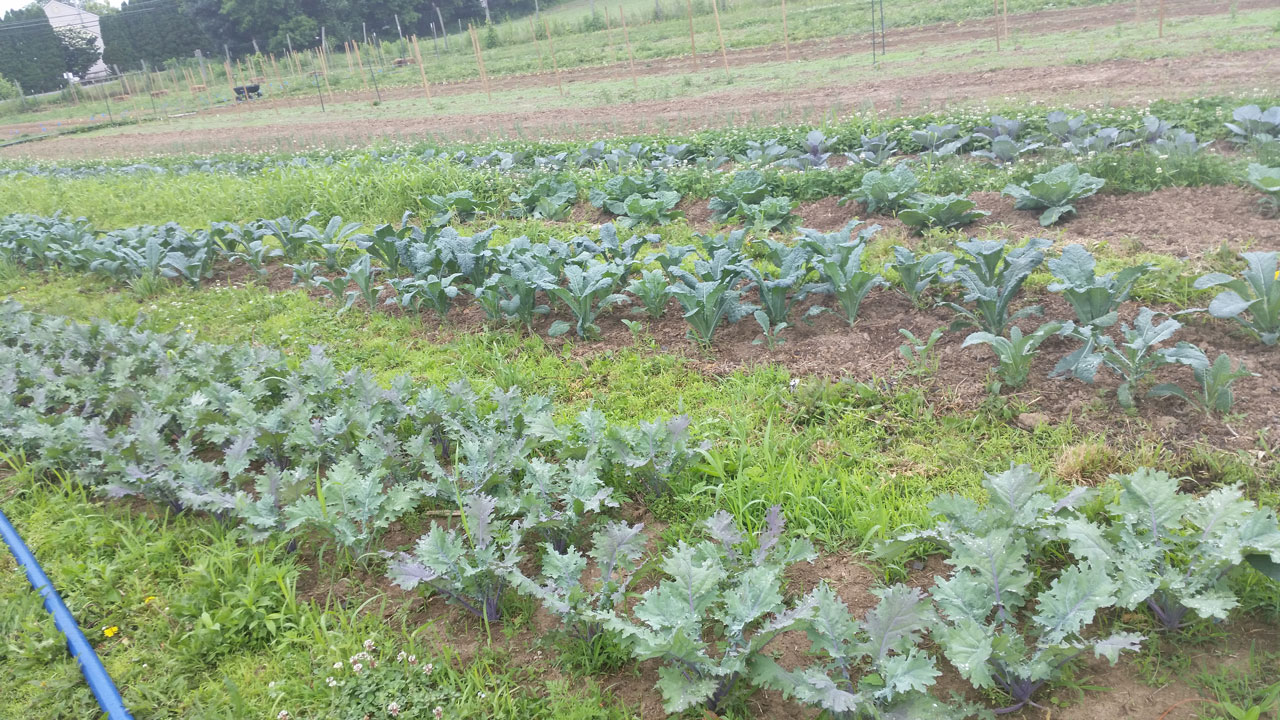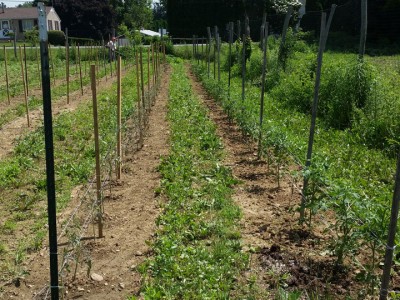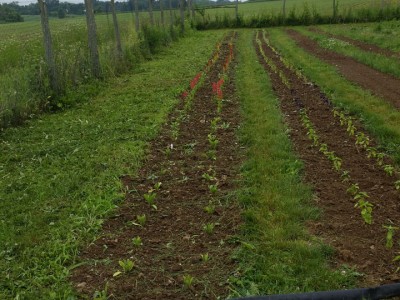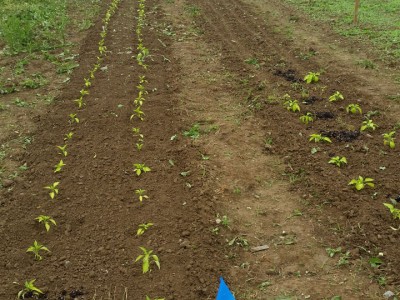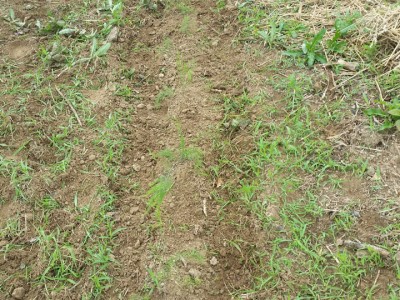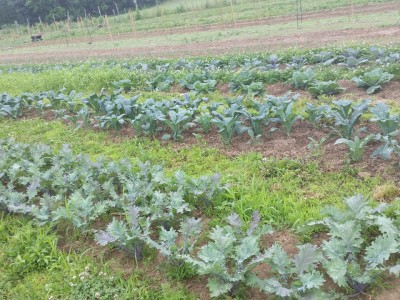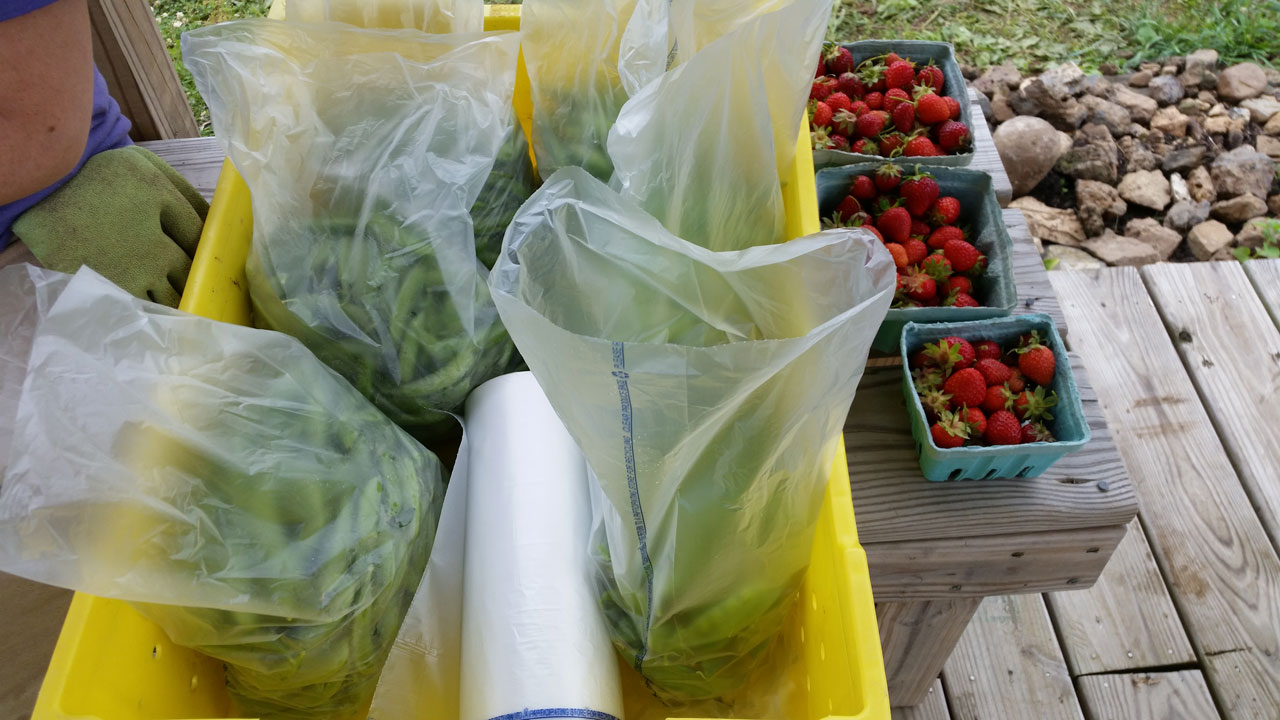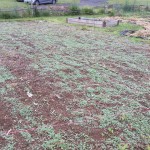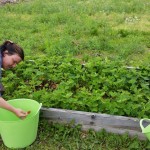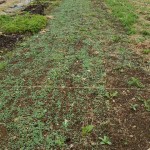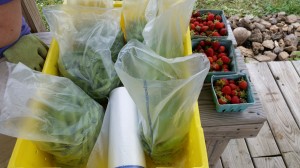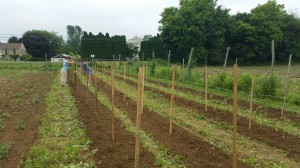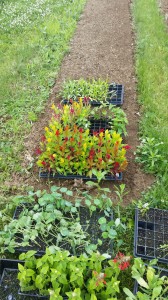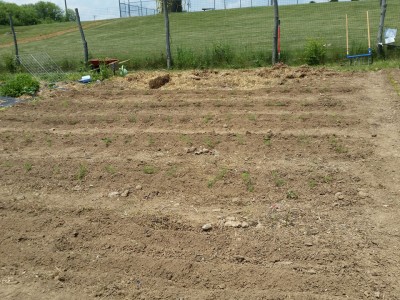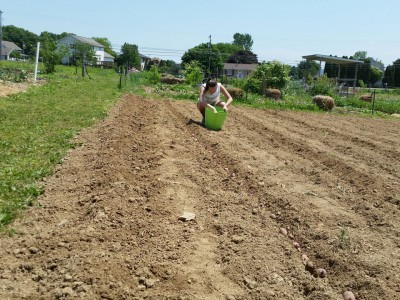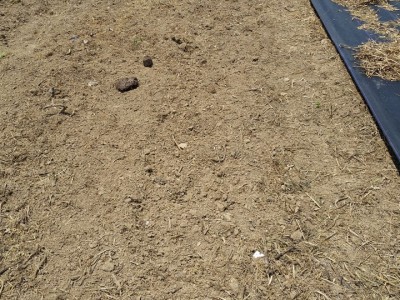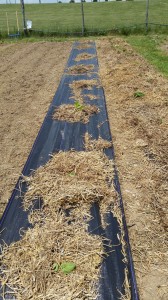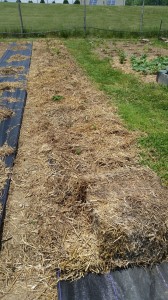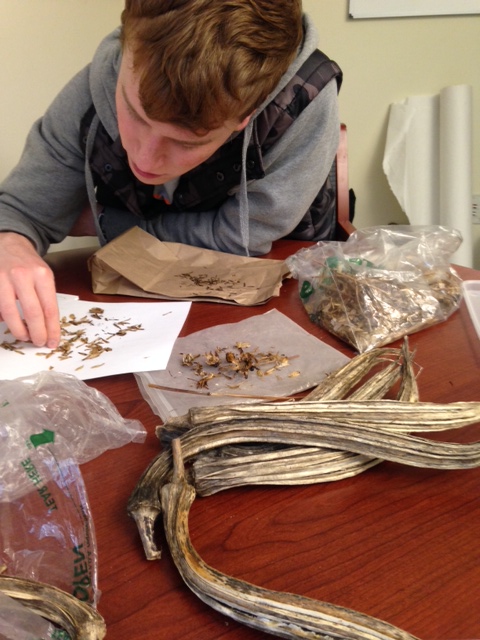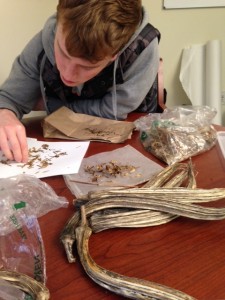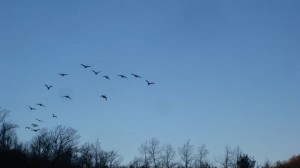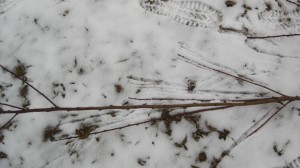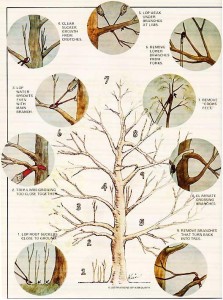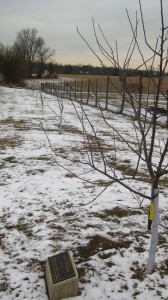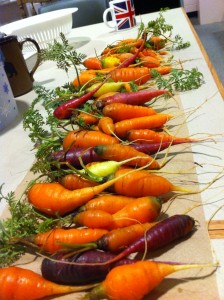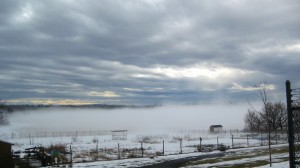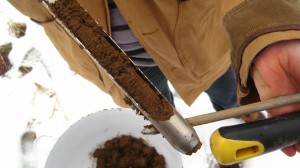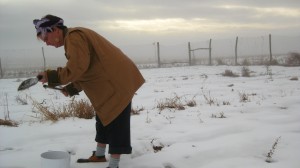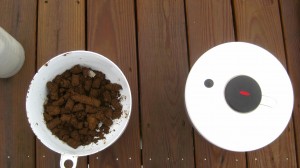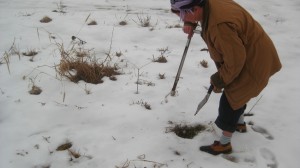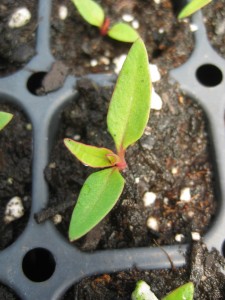- After just one week, many of our tomatoes have been weaved through a second string on their trellises and are tall enough to mulch with straw,
- The flowers and herbs we planted at the back of the farm are taking root,
- We put down some rows of hot and sweet peppers,
- We set up a cute little perennial garden,
- The asparagus we planted two weeks back is thriving,
- And our kale and swiss chard look absolutely beautiful!
June 20th, 2014
As my third week this summer draws into a close, the future is looking bright. At the farm we have plenty of plants growing,
So this growing season is shaping up to be a very green one for the farm. But it’s also becoming more obvious that the further future of LaFarm is going to be very green. As my research on farm infrastructure has gotten underway, the potential for expansion with even small additions to the farm makes future growth seem very within our reach.
Right now, I’m working with our farm manager Sarah, as well as my faculty advisors and now USDA extension educator Tianna DuPont to learn what I need to plan our packinghouse and greenhouse by going out and visiting other farms as well as doing some good old fashioned book learning.
So far, I’ve visited Pennypack Farm and Education Center in Horsham Pennsylvania. Their 12 organic acres were very nice to see up and running with the help of their Farm Manager Devin Barto and their interns like Jenny and Josh, whom I met and who were nice enough to talk to me about Pennypack and farming in general as I helped weed for an hour.
I’ll hopefully be making more connections with more farmers soon.
-Joe Ingrao, Excel Scholar 2014
